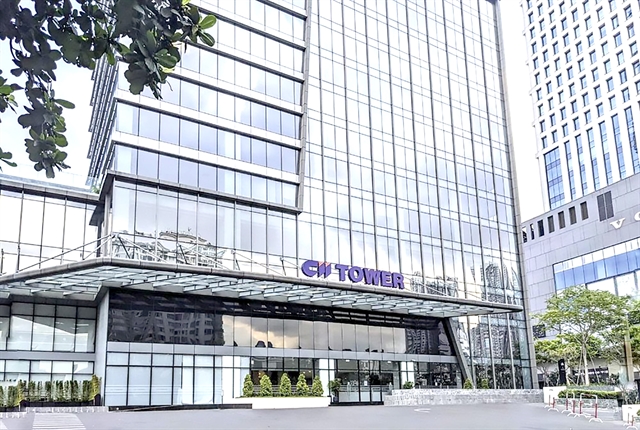 Economy
Economy

 |
| At Hồ Chí Minh City Infrastructure Investment Joint Stock Company (CII), as of the end of the third quarter of 2023, cash and cash equivalents stood at VNĐ307.7 billion. Photo CII |
HÀ NỘI Numerous enterprises engaged in capital-intensive sectors like infrastructure construction are facing challenging situations with limited cash resources.
Cash and cash equivalents, which encompass cash on hand, demand deposits at banks, cash in transit, and short-term investments with a maturity of up to three months, play a vital role as a financial indicator. They reflect a company's ability to meet short-term obligations and serve as a reserve for contingencies such as equipment repairs and replacements, or unforeseen circumstances.
At Hồ Chí Minh City Infrastructure Investment Joint Stock Company (CII), as of the end of the third quarter of 2023, their cash and cash equivalents stood at VNĐ307.7 billion, marking an 11.6 per cent increase compared to the same period last year. However, this figure appears relatively modest when compared to the total assets of VNĐ26 trillion and liabilities of VNĐ18 trillion.
With short-term debts amounting to VNĐ8 trillion by the end of the third quarter of 2023, CII's cash ratio stands at 0.04 times. In fact, CII's cash ratio has consistently remained below 0.1 times from 2018 to the present.
The cash ratio, calculated by dividing total cash and cash equivalents by current liabilities, measures a company's ability to repay short-term debts. A ratio below 1 indicates that the available cash within the business is insufficient to meet these obligations.
In reality, it is rare for businesses to possess enough cash and cash equivalents to cover all short-term debts, resulting in cash ratios typically falling below 1. However, a ratio below 0.1 raises concerns.
The company experienced a negative primary business cash flow of VNĐ1.4 trillion in 2020, a negative VNĐ881.7 billion in 2021, and a positive VNĐ973 billion in 2022. However, in the first nine months of 2023, CII reverted to a negative operating cash flow of VNĐ758.3 billion.
Between 2024 and 2030, CII has set ambitious goals for investment in six transportation infrastructure projects, with a total capital investment of nearly VNĐ75 trillion. Among these projects, the HCM City - Trung Lương - Mỹ Thuận expressway phase 2 represents the most significant investment, totalling VNĐ22 billion. This strategy is implemented as CII focuses on capital resource restructuring to address major operational risks. However, it imposes substantial financial pressure in the short and medium term due to CII's utilisation of a high leverage ratio in the BOT project investment process.
A similar scenario faces Cường Thuận IDICO Development Investment Joint Stock Company (CTI). According to CTI's consolidated financial report for the third quarter of 2023, as of September 30, 2023, the company held VNĐ41.7 billion in cash and cash equivalents, reflecting a 21.7 per cent decrease compared to the beginning of the year. Meanwhile, CTI's total assets amounted to VNĐ4.57 trillion, with liabilities reaching VNĐ3.16 trillion and short-term debt totalling VNĐ537.5 billion.
CTI has experienced a recent downturn in its business situation. In the third quarter of 2023, the company reported a post-tax profit of VNĐ6.5 billion, marking an 81.7 per cent decline compared to the same period last year. Throughout the first nine months of the year, CTI's after-tax profit amounted to VNĐ55.3 billion, representing a 37.4 per cent decrease compared to the corresponding period.
HUD3 Investment and Construction Joint Stock Company (HU3) also faced a decline in cash and cash equivalents. As of June 30, 2023, the company's cash and cash equivalents stood at only VNĐ2 billion, signifying an 85 per cent decrease compared to the beginning of the year. By the end of the second quarter of 2023, HU3's total assets amounted to VNĐ263 billion, while the company carried VNĐ120 billion in short-term debt.
During the first half of the year, HU3 recorded revenue of VNĐ31 billion, indicating a 66.4 per cent decrease compared to the same period last year. Moreover, the company reported a negative post-tax profit of VNĐ2.6 billion, whereas during the same period the previous year, it achieved a profit of VNĐ268.5 million. HU3 attributed the decline in business performance to the lack of new projects and slower-than-planned payments for ongoing construction projects.
Licogi 13 Joint Stock Company (LIG) faced a cash payment ratio of only 0.03 times in the third quarter of 2023, which was consistent with the previous four quarters at approximately 0.01 times. As of September 30, 2023, LIG held VNĐ85.2 billion in cash and cash equivalents, while carrying VNĐ3.37 trillion in short-term debt.
In April 2023, LIG approved a plan to conduct a private offering of over 22.5 million shares to professional securities investors at a price of VNĐ10,000 per share. The capital raised from this offering is expected to be utilised for capital contributions to three entities: Licogi13 Joint Stock Company - Construction Foundation, Licogi13 Joint Stock Company - Infrastructure Mechanics, and Licogi13 Joint Stock Company - Construction Materials, as well as for supplementing working capital.
Throughout the first three quarters of the year, LIG reported a post-tax profit of VNĐ7.2 billion, representing a 21.7 per cent decrease compared to the same period last year.
Vina2 Investment and Construction Joint Stock Company (VC2) also faced a cash shortage. At the beginning of 2023, VC2 held only VNĐ4.5 billion in cash and cash equivalents, despite having assets worth VNĐ2.29 trillion and short-term debt of VNĐ1.47 trillion. By the end of the third quarter, cash and cash equivalents had increased to VNĐ48.3 billion, but short-term debt rose to VNĐ1.6 trillion. The company's cash payment ratio stood at 0.03 times in the third quarter. VNS




